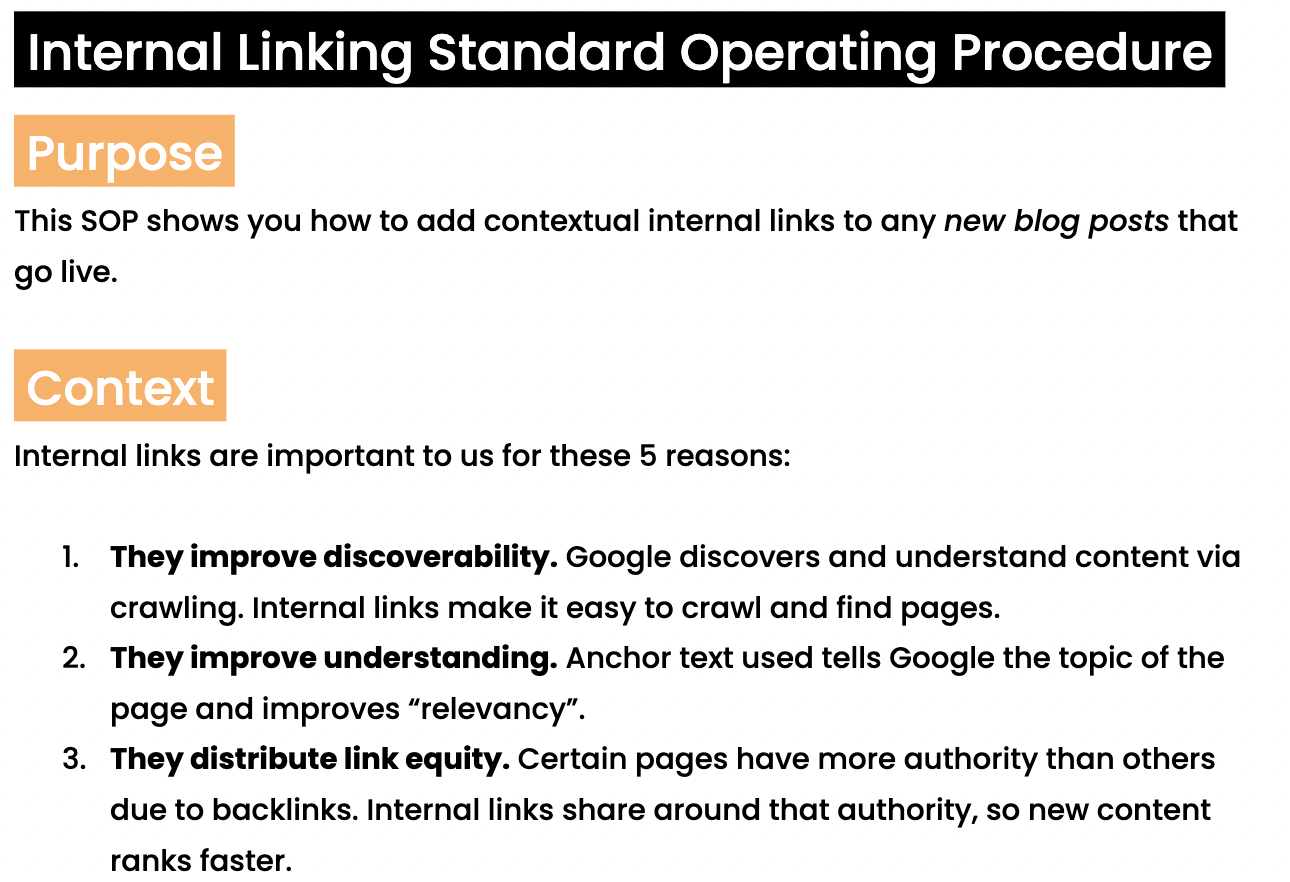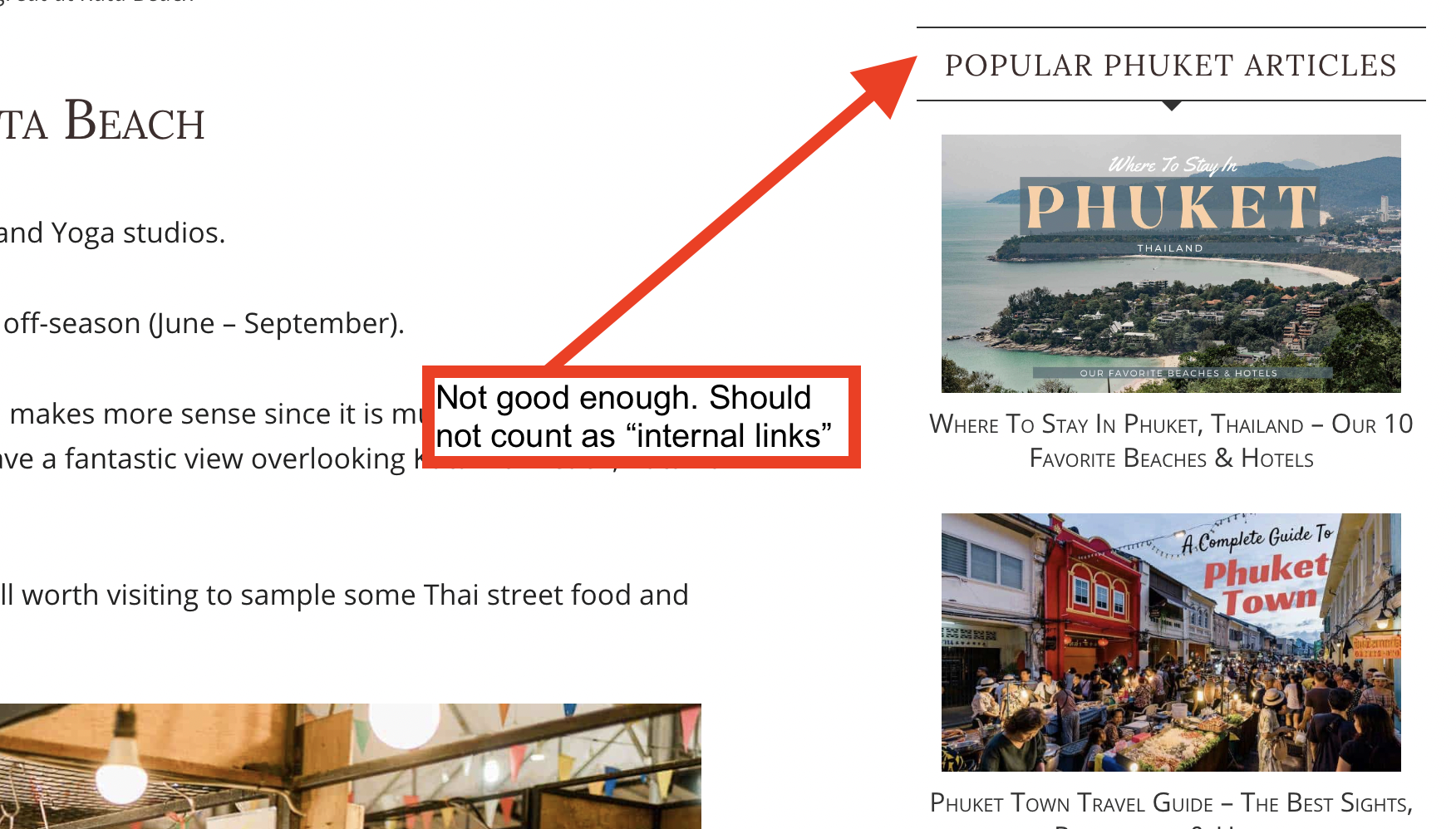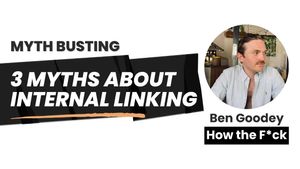This week, I put together my internal linking best practices into a Standard Operating Procedure (SOP) for How the F*ck Premium Members.

I never create best practice documentation without a thorough deep dive of the research and evidence.
And this week, my deep dive discovered 3 common internal linking myths that I want to share with you guys.
Three Common Internal Linking Myths: BUSTED
Myth One: Topics Should be Siloed
It's a commonly held belief that content should be siloed into topics.
The suggestion is that you should avoid linking from one topic cluster to another in order to "keep link juice within the silo".

But as Ahrefs points out in this excellent article, siloing just doesn't make any sense for SEO or users.
Are people really suggesting that:
- Topics are not interconnected?
- Other areas of a site aren't contextually important (Like author bios? Definitions? Research studies?)
Hell nah!
Whilst I do recommend interlinking relevant blog posts to one another, don't hesitate to add internal links to relevant and helpful content in complementary topics.

Myth Two: Recommended & Related Reads Are "Enough"
In a WhiteBoard Friday from way back, Rand Fishkin showed that navigation links are devalued compared to content or contextual links.
For this reason, it's not enough to let automated site menus or breadcrumbs do internal linking for you.

Many tools that count internal links to a page will register these, and you might feel good that each page has 3-5 internal links to it.
But the really valuable part of internal linking comes from contextual links.
As I point out in the SOP, contextual links improve Google's understanding of a page. The topic of the linking page and the anchor text used coaches Google what the page is about and helps them understand “relevancy”.
The effect less impactful coming from navigation menus:
"When something is in the navigation, it's almost always universally in that navigation. When something is in [content], it's often only specifically in here."—Rand Fishkin
That being said, I've seen notable lifts in traffic by including internal links to core pillar pages in the site footer.
However, just because your footer sits on 200 pages it does not mean Google sees that page as getting 200 internal links. Those are not equal to 200 contextual links within blog posts.
Myth Three: Internal Links Should Be Evenly Distributed
It's been pretty common in my time as an SEO to hear the advice "just make sure every article has 3-5 internal links to relevant content".
Simple. But truly a poor hot take.
The truth is, Google uses internal links to decide which pages YOU consider most important on your site.
If every page has 3-5 internal links, there is zero hierarchy.
Here's some evidence:
"If [the site structure] very flat, then we think, oh all of these are equally important and we don’t really know which of these are connected to each other."—John Mueller, Google
and
"I think [internal linking] is one of the biggest things that you can do on a website to kind of guide Google and guide visitors to the pages that you think are important. And what you think is important is totally up to you."
"You can decide to make things important where you earn the most money or you can make things important where you’re the strongest competitor or maybe you’re the weakest competitor."
"With internal linking you can really kind of focus things on those directions and those parts of your site."—John Mueller, Google
What Google's spokesperson is suggesting here is that internal linking should be strategic.
- What pages do you want to rank higher?
- What pages do you want crawled more?
- What pages do you want more "link juice" on?
9 times out of 10, the answer is one of two things:
- Your big money opportunity pages (Best tools listicles or product landing pages)
- Your big traffic opportunity pages (Your hub pages and topics that exemplify your brand)
While all your content should be easily discoverable and not "too deep", important pages should be aggressively linked internally.


